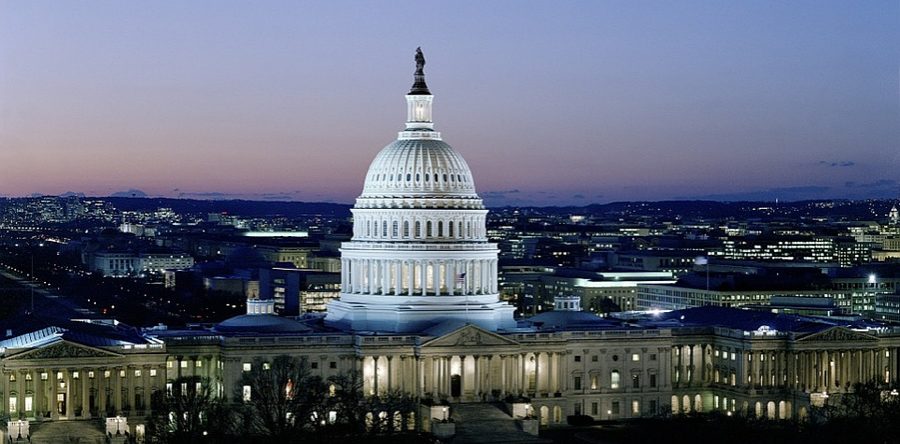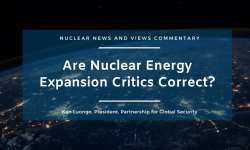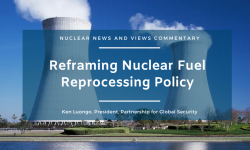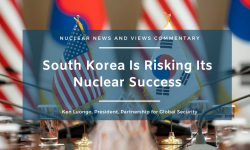Game of Thrones apparently has switched locations from the Shivering Sea to the shimmering sands of Saudi Arabia. This is the unavoidable impression offered by a stream of speculation and palace intrigue over the potential sale of two nuclear reactors to the kingdom.
There are several threads that run through this highly-charged nuclear debate that should be disentangled. One is the belief that the U.S. is trying to end-run its own non-proliferation standards and approval processes. Second is the questioning of Saudi Arabia’s desire for nuclear power. Third are the implications of Russia and China becoming the kingdom’s nuclear supplier. And fourth is the value of the technology and standards of the U.S. and its allies in these nuclear builds.
The U.S. has had a trifecta of miscues in the Saudi process, providing ample fuel for critics.
It is clear that there was a very misguided effort in the early months of the new administration to get approval for a document that outlined how the U.S. could supply technology to Saudi Arabia. There was a suggestion that this could be done without consulting Congress. That would be illegal and also easily detected. The Congress is not blind, and whistleblowers would have come out of the woodwork, as they already have, to draw attention to efforts to circumvent congressional authority. The White House document was never acted on, but its existence cast a long and lingering shadow over U.S.-Saudi discussions.
That specter intensified because the administration took the unusual step of giving the Department of Energy rather than the Department of State the lead responsibility in negotiating the required 123 nuclear cooperation agreement. That upset the regular order in Washington and raised concerns about the forcefulness with which the U.S. would pursue strong non-proliferation commitments from Saudi Arabia. But high-level administration officials so far have made the right responses, pledging their commitment to achieving the Gold Standard or getting close to it.
A third strike for the administration’s strategy was its decision not to make public, or to brief Capitol Hill on, the approval of seven Part 810 export applications from U.S. companies. These are necessary to initiate discussions on nuclear technology with Saudi officials. These companies were playing by the rules, not trying to circumvent them. Even though they were not approvals to transfer technology as some have suggested, the opaque process fed into the negative narrative. This has led to a congressional backlash that, if acted upon, will further hobble already limping U.S. nuclear exports.
Complicating the situation are the serious mistakes that the Saudis have made. They may have legitimate reasons for wanting nuclear power. Their first step across the civil nuclear threshold will come later this year with the completion of an Argentina-produced research reactor. But statements about matching a potential nuclear weapons program by Iran, pushing back on U.S. nonproliferation demands, and an unwillingness to accept the IAEA’s more intrusive inspection regime have raised real questions about their commitment to the peaceful use of nuclear power. The Khashoggi case has further curdled congressional support for the current Saudi leadership. This collectively has impeded the completion of a U.S.-Saudi nuclear cooperation deal and led to calls to end the negotiations.
Eagerly eyeing this smoldering landscape are Russia and China, both still in the running for Saudi Arabia’s business. Neither is limited by a critical Congress or the need to adhere to America’s high non-proliferation requirements. And both are financially backed by their governments and fully integrated into their geostrategic objectives. In the Middle East, Russia already has a nuclear foothold in Iran and an agreement with Egypt to build four large nuclear power plants among numerous other MOUs. Handing the Saudi nuclear business to either of these authoritarian governments will be self-defeating for the U.S., its allies, and their geopolitical objectives.
The other active nuclear supplier in the Middle East is South Korea, which is building four reactors in UAE that contain substantial U.S.-origin technical content. While Korea and the U.S. are now competing for the Saudi reactors, the kingdom’s decision to push back its decision on the ultimate winner until 2020 (and likely after the U.S. presidential election) presents the time and opportunity for the U.S. and Korea to explore a joint reactor offer that would benefit both countries and global security. But it will take a significant political and diplomatic effort to reconcile the hard-charging corporate competitors in both countries to make this work.
The Saudi decision to pursue nuclear power has generated concerns, conspiracies, and the conflation of many separate issues into one dark narrative. But the Saudi delay in making a final decision has opened the opportunity for a rethinking of the competition. The U.S. and Korea together can counterbalance the influence of Russia and China in the region, offer some solace to a skeptical Congress that the U.S. is not going it alone, and provide a blueprint for future fruitful joint nuclear initiatives. Their technical capabilities are complementary, they have a collaborative nuclear history, and their democratic and nuclear security credentials are an important barrier to the potential for proliferation. The real game is preventing a nuclear arms race in the Middle East.






